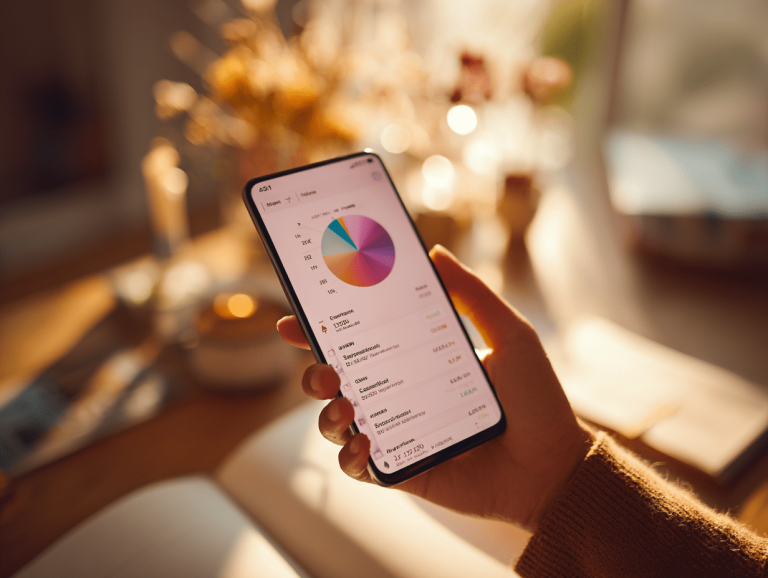Finance Organization Ideas: Practical Tips and Insights You Can Use
Managing family finances can feel overwhelming — from recurring bills to saving for college or handling unexpected car repairs. But staying financially organized doesn’t require fancy tools or a degree in accounting. With the right habits, structure, and tools, you can bring clarity, reduce stress, and work toward meaningful goals together as a family.
This guide offers practical, easy-to-implement finance organization ideas to help you confidently manage your household budget — whether you’re a busy parent, dual-income couple, or a growing family juggling everyday priorities.

Set Clear, Actionable Finance Goals
Before organizing spreadsheets or downloading budgeting apps, step back and ask: What are we trying to accomplish?
Smart Finance Goals Ideas for Families
Well-defined goals make it easier to build an intentional budget. Examples include:
- Build a $1,000 starter emergency fund
- Save $250/month for a vacation next summer
- Pay off a specific credit card by year-end
- Save $50,000 for a home down payment in 3 years
- Fund each child’s 529 plan with $100/month
Use the SMART method (Specific, Measurable, Achievable, Relevant, Time-bound) to shape your goals. For example, instead of “save for a car,” say, “Save $6,000 in 12 months for a reliable used SUV.”
Revisit your goals quarterly to adjust timelines, increase contributions, or celebrate small wins.
Keep a Finance Notebook
In the age of digital tools, a written finance notebook may feel old-fashioned — but it’s powerful. Handwritten entries promote awareness and reduce financial autopilot behavior.
What to Include in Your Finance Notebook
- Monthly income and recurring expenses
- Weekly discretionary spending
- Bill due dates and confirmation numbers
- Sinking funds (e.g., birthdays, car maintenance)
- Savings/debt progress graphs
- Financial reflections or takeaways

Bonus Tip: Create Sections or Tabs
Use colored dividers or sticky tabs to separate topics — like “Budget,” “Debt Payoff,” “Kids’ Savings,” and “Yearly Goals.” This keeps everything structured and accessible.
Finance notebooks are also great for family meetings. Kids can help decorate them and learn about money in a fun, hands-on way.
Embrace Notion Template Ideas Finance Enthusiasts Love
Notion is a versatile, visual tool that helps you build a personal finance hub. It’s especially helpful for families who like to track finances collaboratively.
Best Notion Template Ideas Finance Families Can Use
- Monthly Budget Template: Split expenses into fixed, variable, and savings categories.
- Debt Snowball Tracker: List debts with balances, interest rates, and payoff dates.
- Subscription Tracker: Keep tabs on services like Netflix, Amazon Prime, and Spotify.
- Bill Calendar: Track due dates and automate reminders.
- Annual Goals Dashboard: Visualize your top 3–5 finance goals with progress meters.
The drag-and-drop interface and ability to link databases make Notion uniquely customizable. You can even embed charts and sync to Google Calendar for due dates.

Automate and Simplify Your Financial Systems
Automation removes the guesswork from budgeting. When money flows where it needs to without constant effort, you reduce friction and save time.
Examples of What You Can Automate
- Split paycheck: 80% to checking, 20% to savings
- Auto-transfer: $100 every payday to vacation fund
- Auto-pay: Mortgage, insurance, utilities
- Round-up savings: Use apps that round purchases and deposit spare change
However, automation should never replace awareness. Schedule a monthly review to make sure automatic payments and transfers are aligned with current priorities.
Visualize Your Progress
Turning abstract financial goals into visual milestones increases motivation — especially when the whole family can see it.
Family-Friendly Visual Tools
- Printable savings trackers (color-in every $100 saved)
- Vision boards (with images of travel, homes, or paid-off debts)
- Digital dashboards with pie charts and line graphs
- Post a “Top 3 Goals” board near your family calendar
When children can see progress, they feel included and learn delayed gratification.

Make Financial Check-Ins a Family Habit
Consistency is key. A short 20–30 minute review weekly or monthly can prevent overspending, improve communication, and reset goals together.
What to Discuss During a Finance Check-In
- What came in and what went out
- Bills coming up in the next two weeks
- Unexpected expenses (e.g., repairs, medical visits)
- Adjustments to the current budget
- Celebrating small wins (e.g., reaching $500 in savings)
Make it fun: set a regular time, prepare a favorite snack, or play background music. Over time, these check-ins can become a positive family ritual.
Declutter Your Financial Life
Clutter creates confusion. Financial minimalism can bring peace of mind and make room for what matters.
Steps to Financial Decluttering
- Close unused bank or credit accounts
- Unsubscribe from promo emails that trigger impulse spending
- Switch to paperless billing and store files digitally
- Consolidate retirement accounts (e.g., roll old 401(k)s into one IRA)
- Digitize warranties, receipts, and contracts

Tip: Create a “One-Pager”
Summarize your financial life on one document — listing account numbers (last 4 digits only), logins, bill due dates, and emergency contacts. This is helpful during crises or for your partner to stay informed.
Budget According to Your Family’s Values
Forget one-size-fits-all budgeting rules. A values-based budget ensures your money supports the lifestyle and legacy you’re building.
Align Budgeting with What Matters Most
- Invest in education or extracurriculars if learning is a top value
- Allocate for giving if philanthropy is important
- Save for shared experiences like travel or reunions
- Limit spending in low-priority areas (e.g., fast fashion or takeout)
Hold a family discussion about shared values — this shapes long-term habits and avoids friction over spending choices.
Organize Your Financial Documents
A tidy filing system makes tax season smoother and ensures nothing slips through the cracks.
Physical & Digital Organization Tips
- Use labeled folders: “Taxes,” “Banking,” “Insurance,” “Medical”
- Scan and store docs in cloud storage (e.g., Google Drive or Dropbox)
- Use password managers for safe login storage
- Name files clearly: “2024-taxes.pdf” or “home-inspection-April2025.jpg”
Store critical documents (wills, deeds, birth certificates) in a fire-safe box or with an attorney if needed.

Teach and Involve the Whole Family
Financial literacy isn’t taught in most schools — but it can start at home. Including your partner and kids in financial discussions builds trust and lifelong habits.
Easy Ways to Involve Family Members
- Give kids a weekly allowance and let them budget it
- Use a clear jar for physical savings (so they can see it grow)
- Let teens plan a family meal within a set grocery budget
- Involve your spouse or partner in monthly budget reviews
The more engaged everyone is, the stronger your financial foundation becomes.
Conclusion: Create a System That Works for Your Family
There’s no “perfect” way to organize your finances — only the way that fits your goals, your lifestyle, and your family. Whether you prefer a handwritten finance notebook, digital Notion dashboards, or color-coded spreadsheets, the most important thing is consistency.
With clear finance goals ideas, regular check-ins, and simple automation, you can transform chaos into clarity. Even small steps — like tracking spending or reviewing subscriptions — make a difference over time.
Make finance organization a family project, not a solo mission. Involve your kids, align your spending with your values, and celebrate progress together. Financial peace is possible — and you’re already on your way.





